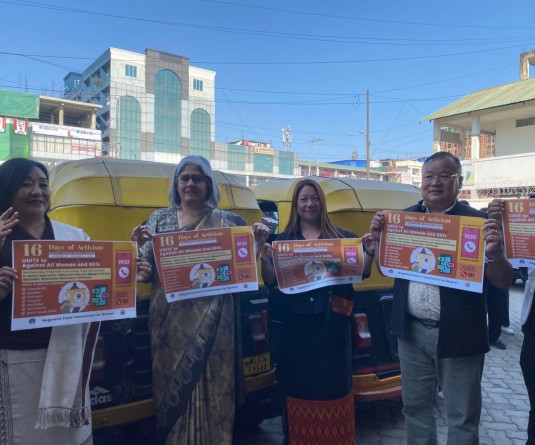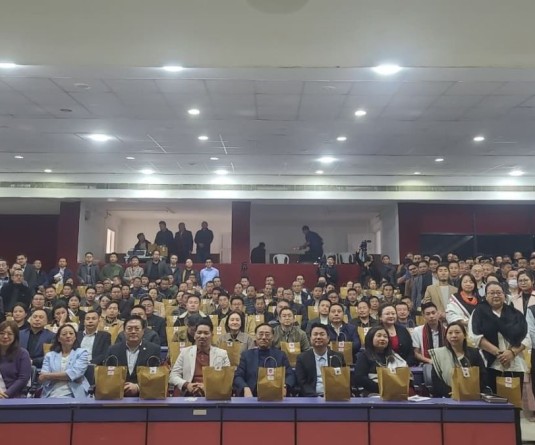
“If they are thinking of banning slaughter of dogs, they must first come up with alternate livelihoods for us”
Morung Express News
Dimapur | July 17
Animal rights activists who believe that dogs should not be on the food plate have launched a major campaign to put an end to the ‘illegal’ dog meat trade in India.
Humane Society International (HSI), India, recently posted “disturbing images and video footage” of what it labelled “dog meat death pits” and the “cruel treatment” meted out to dogs in Nagaland. This has elicited outrage in both national and international media, dubbing it as India’s version of the Yulin dog meat festival in China.
Paradoxically, in Nagaland, the role of dogs has different dimensions. For many, they are pets adored as ‘human’s best friend’ while for others, they are a portion of traditional culinary.
As buzz around the contemplated ban on slaughter of dog meat continues, traders in Nagaland who deal in dog meat find themselves in muddy waters, particularly after the Nagaland Government informed in the media that it is in the process of banning the use of dog meat as food in the state. However, the government later refuted this.
While the national and international media have been presenting one side of the tale, Nagaland’s dog traders feel like voices of people have been completely disregarded. Fearing for the future of their children, tied closely to consumption of dog meat, dog traders in Nagaland came together to speak to The Morung Express.
Livelihood & ancestry
At the markets in Dimapur and Kohima, women are at the forefront of the dog trade. Ano (name changed), for instance, is 43 years of age and supports four school going children through the sale of dog meat. On good days she can sell five dogs, on a bad day none; most of the time, the meat is sold in parts—each dog fetches a maximum profit of Rs. 200. Yet the overall business, also assisted by her husband, fetches them enough to carry on.
“Not all five fingers are the same,” explains Ano, drawing analogy to life in Naga society today. “I don’t have a government job like others. For years we have been trading in dog meat because there is demand for it in the market. We eat dog meat since time immemorial,” she stresses.
While dogs have been part of traditional Naga therapy (medicine) and delicacy (food)—“organic cure for energy loss,” particularly in menstruating women and the elderly—even non Naga people have become fans of dog meat, particularly the bile (titta) that “helps in post surgery recovery.” Given the shape of health care in Nagaland, most people have continued to depend on indigenous organic cures, particularly derived from animals. Traditional Naga knowledge entails a series of such cures.
“This is food for people of Mongolian origin. Dogs are eaten in Thailand, Vietnam, Cambodia, Laos, China, etc. Why are we being shown in poor light for this?” chips in an old man. Much of the knowledge on the therapeutic properties, as well as dose, has been passed on through ancestors.
Most importantly though, “If they are thinking of banning slaughter of dogs, they must first come up with alternate livelihoods for us,” asserts Ano.
Storage
One of the prominent allegations against the sale of dog meat has been in the storage of the live dogs. But for San (32, name changed), a widow who supports three children through the dog market, sacks are the best way to keep them. “We don’t stitch up their mouths. They are temporarily tied with thread, much like a dog muzzle, and opened up regularly in order to feed them food and water,” she explains—their mouths are mostly tied for safety purposes so that the keepers are not bitten. Most dogs will get sold in a day but the unsold ones are taken home and kept in the same environment as the keeper. At the end of the day, the sacks are changed if the dog remains unsold.
“If this is ill treatment, then one should put a ban on the breeding and slaughter of all animal—pigs, cows, goats, chicken,” says San. She feels it is better to keep the dogs this way than tie them up with chains, though traders remain open to suggestions for alternatives, also for their slaughter. The dogs are mostly brought to them by men who collect them from various areas, over which the women traders did not shed light.
Trade is interconnected
Dog trade has been a tradition of the markets in Nagaland, particularly Dimapur and Kohima, for 20 odd years. In Dimapur, dog meat used to be sold in New Market after which it was shifted to the Supermarket area.
“There are about 10 dog meat sellers here,” highlights Savin, Secretary of the Dimapur Supermarket Vegetable Vendor’s Society. “When the customer comes to buy dog meat, they buy vegetables too, and vice versa. That is how the local market sustains itself. First they will ban one item, then the next and then the whole local market will die,” he feels about this imposed tirade that seeks to rob people of their food sovereignty, making way for capitalist food markets, far more cruel to animal and human alike.






